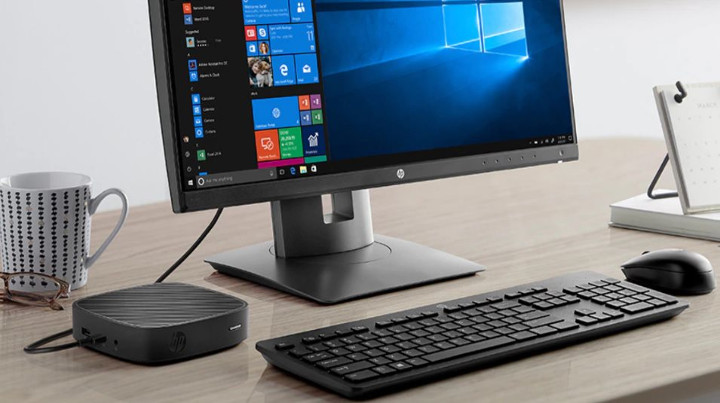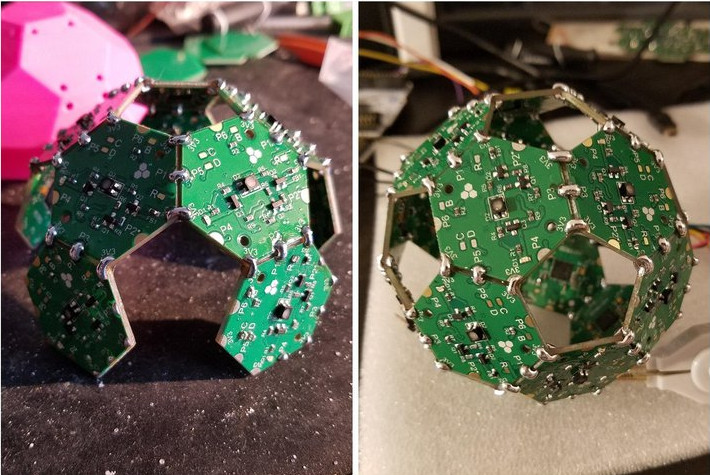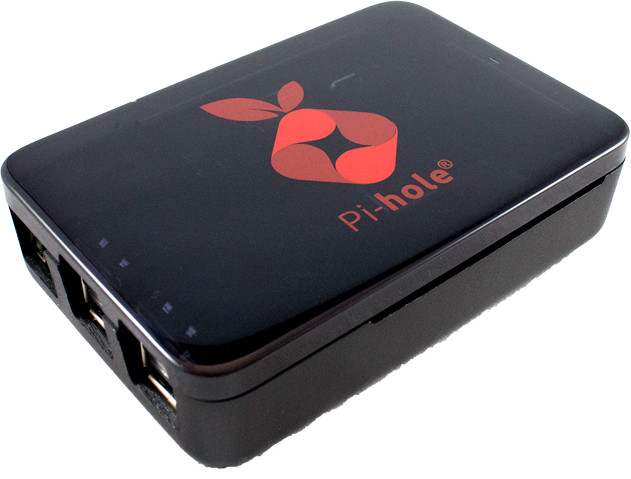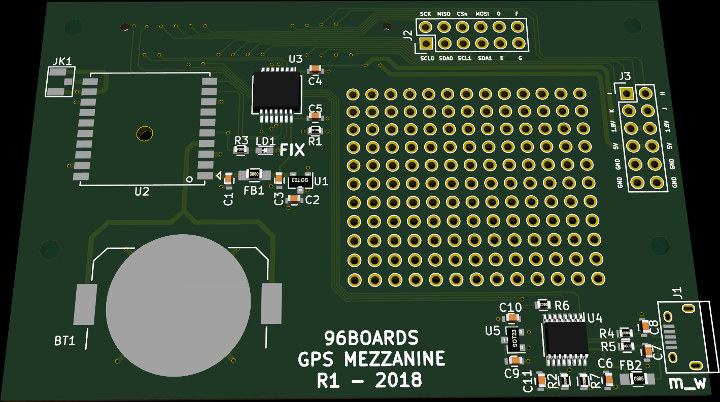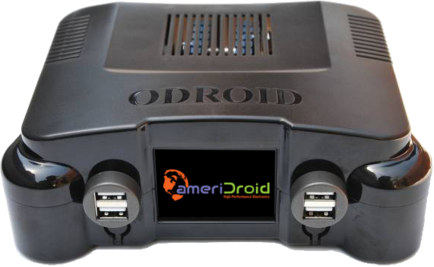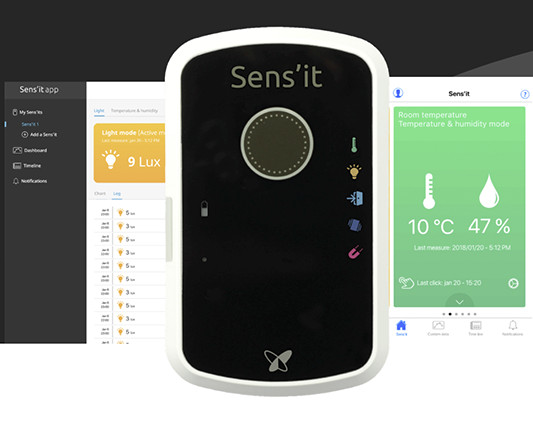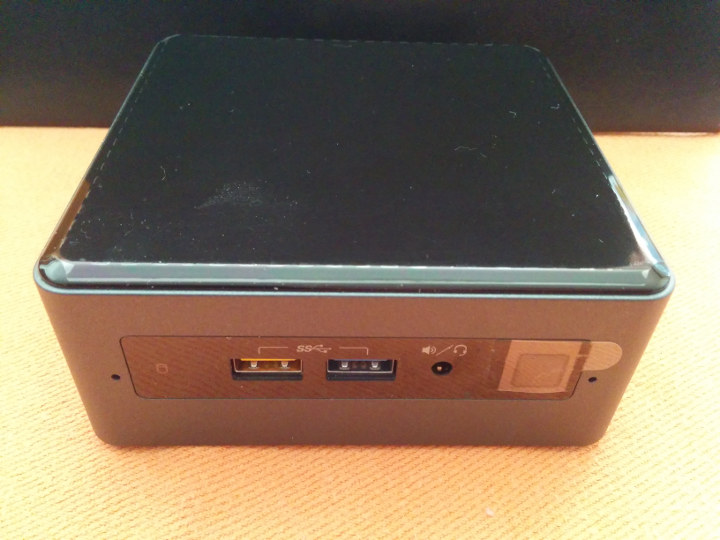MediaTek unveiled Helio P60 Cortex A73/A53 processor with AI HW acceleration a few months ago, and we were promised smartphones would start selling in Q2 2018. Mediatek’s partners seem to be right on schedule, as several MediaTek Helio P60 smartphones have now been announced, including UMIDIGI Z2 Pro, which we’ll cover in this post. Specifications for UMIDIGI Z2 Pro smartphone: SoC – MediaTek Helio P60 big.LITTLE octa-core processor with four Arm Cortex-A73 up to 2.0 GHz, four Arm Cortex-A53 up to 2.0 GHz, Arm Mali-G72 MP3 GPU at 800MHz, and a multi-core AI processing unit System Memory – 6GB RAM Storage – 128GB flash, micro SD slot up to 256 GB Display – 6.2″ FHD+ (1080 x 2246) display with 403 PPI Camera 16MP + 8MP rear camera, 5-element lens, Samsung sensor, dual LED flash, face recognition 16MP + 8MP front-facing camera, ƒ/2.0 aperture, Sony sensor, face recognition Video recordings […]
HP t430 Thin client Works with a Single USB Cable
Gemini Lake mini PCs are starting to sell and ship, and from the look of it, HP t430 appears to be yet another Gemini Lake mini PC based on an Intel Celeron N4000 processor. But the device is actually a thin client that has been designed to work with a single USB type C cable for power, video and audio. HP t430 specifications: SoC – Intel Celeron N4000 dual core processor @ 1.1 GHz / 2.4 GHz with Intel UHD Graphics 600 System Memory – Up to 4GB DDR4 RAM Storage – 16 GB to 32 GB Flash memory Display – HDMI, DisplayPort 1.2, USB type C DisplayPort Alt-mode Audio – Headphone/microphone mini-jack Networking – Gigabit Ethernet, and WLAN USB – 3x USB type A ports, 1x USB type C (DisplayPort 1.2, USB 3.1, charging) Misc – Power button, Kensington lock Power Supply – 19V DC, 45 W, worldwide auto-sensing, 100-240 […]
Hexabitz Modular Prototyping Platform Enables Wire-Free 3D Electronics Designs (Crowdfunding)
A few years ago, I made a Raspberry Pi case made of perfboard and created some sort of DIY modular 3D electronics design by using the top and sides of the case to also hold electronics components and associated circuitry like a relay, and LEDs. The just launched Hexabitz hexagonal / pentagonal modules are designed to make prototyping easier, and also provide flexibility to create all sort of wire-free (3D) electronics designs with minimal soldering. A little over a dozen of modules are currently on offer, most with an STM32F0 Arm Cortex M0 micro-controller: Modules with built-in MCU 01R00, P01R00 – RGB LED (hexagon / pentagon) with Cree Tri-color (RGB) SMD LED, 4-Pin PLCC H02R10 – Bluetooth/BLE V4 based on Laird BT900-SA + chip antenna, +8 dBm max H04R00 – Audio amplifier, speaker, and headphone jack based on ST TS4990IST 1.2W audio power amplifier, 0.7W, 8 Ohm speaker H05R00 – SPI […]
Pi-Hole Kit is a Raspberry Pi based Ad Blocker
If you don’t like getting tracked or see ads, it’s normally easy enough to install an ad blocker plugin in your web browser. But if you want to save some resources on your computer(s) and/or prevent online ads on other devices – including TVs – on your local network, it’s possible to do so via an external device / router using software such as Pi-Hole that can be installed on a Raspberry Pi board (or other Linux machines) in order to filter ads before they even get to your computer. This would normally require you to get your own hardware, enclosure, flash the firmware on a board, and install Pi-Hole yourself. That should easy enough for most regular readers of this blog, but there’s no an option for less tech-savvy user, as Pi Supply and Pi-Hole have partnered to launch the Pi Hole Kit with everything in one packages and […]
96Boards GPS Mezzanine is the First Add-on Board part of 96boards Community Mezzanine Initiative (Group Buy)
96Boards hardware development platforms support add-on boards called Mezzanines, and you’ll find a bunch of them on 96Boards website. Most are designed and manufactured by companies, but in order to bring more (individual) open source hardware developers on-board, the 96Boards Community Mezzanine initiative was launched to bring industry representatives and community members together. The idea is to encourage people to submit their KiCad/Altium 96boards’ mezzanine designs to the github repository, and the manufacturing costs of the most popular designs can be lowered by offering them through GroupGets group buying platform. The first of those boards to be launched is 96Boards GPS Mezzanine with the following specifications for the R1 board: Adafruit Ultimate GPS Module PA6H_1103854 – 66 channel w/10 Hz updates MTK3339 chipset -165 dBm sensitivity External u.FL antenna connector Fix and PPS signals brought to down baseboard Expansion – USB UART breakout, breakout headers for I2C, SPI, GPIO, and […]
XU4Q Retro Gaming System Runs ODROID GameStation Turbo, Sells for $150 and Up
One of the use case for little Arm Linux boards is retro gaming thanks to open source projects like RetroPie, RetrOrangePi, Lakka, and others. To get a complete & usable system, it’s possible to purchase console kits, enclosures, or even complete game consoles running one of such emulators. This morning I’ve come accross another option, as Ameridroid is now taking pre-order for XU4Q Retro Gaming System for $149.95 and up. As it name implies, the console is based on ODROID-XU4Q, the fanless version of ODROID-XU4 board, which with its Exynos 5422 octa-core processor and 2GB RAM will be much more powerful than Raspberry Pi 3 boards, and most other boards on the market. The kit also includes OGST Gaming Console, GameSir G3w analog joystick controller, a power supply, and a 16GB microSD boot media flashed with ODROID Game Station Turbo based on Debian. If you already own an ODROID-XU4(Q) board, […]
Sens’it Discovery is a Sigfox IoT Solution with 6 Sensors
Sigfox has just launched Sens’it Discovery, which they describe as a “end-to-end IoT solution, which aims to accelerate the adoption of the IoT (Internet of things) among business and technical professionals”. The solution is comprised for Sens’it 3 device with 6 sensors, sensit.io application, and Sigfox connectivity. Sens’it 3 hardware specifications: MCU – STM32 micro‑controller Connectivity TI CC1125 radio transceiver Sigfox Ready class 0U Frequencies – 868 to 869.7 MHz, 902 to 908 MHz, or 923.2 MHz (TX) / 922.2 MHz (RX), or 920 to 925 MHz depending on region Transmit Power emission – 14 dBm ERP (RC1), 22 dBm ERP (RC2), 10 dBm ERP (RC3), 22 dBm ERP (RC4) Sensors Thermometer (HTS221) – -40 to 120°C / Accuracy ± 0.5°C Humidity (HTS221) – 0 to 100 / Accuracy ± 3.5% rH (20 to +80% rH) Accelerometer (FXOS8700) – ±2, 4, 8 g / Accuracy 0.244, 0.488, 0.976 mg Magnetometer (FXOS8700) […]
Intel NUC Kit NUC7PJYH Review – An Intel Gemini Lake Pentium Silver J5005 Barebone Mini PC
When Intel released their latest NUC Gemini Lake mini PCs they prioritized cost over performance. As a result the processor they chose for the ‘Intel NUC 7 Essential’ mini PC is somewhat underwhelming. Fortunately they released another model in the series, the rather misleadingly named ‘Intel NUC Kit NUC7PJYH’ which is is actually a ‘barebones’ mini PC just needing a stick or two of RAM and an SSD for storage. It contains an Intel Pentium Silver Processor J5005 SOC which is a quad core processor bursting up to 2.80 GHz together with a slightly more powerful Intel UHD Graphics 605 processor that is capable of 4K support at 60Hz. Visually it is no different to the Celeron NUC reviewed earlier in that it is physically small consisting of an approximately 4.5″ square case about 2″ tall with a distinctive front panel that includes the power button and a couple of […]



